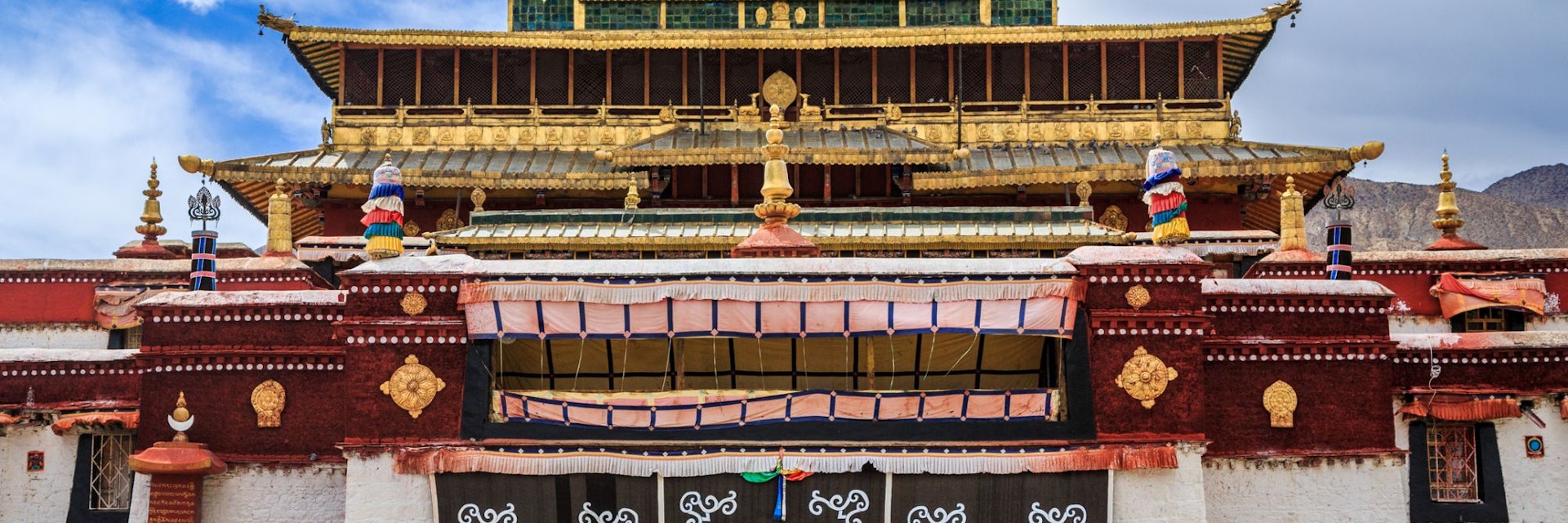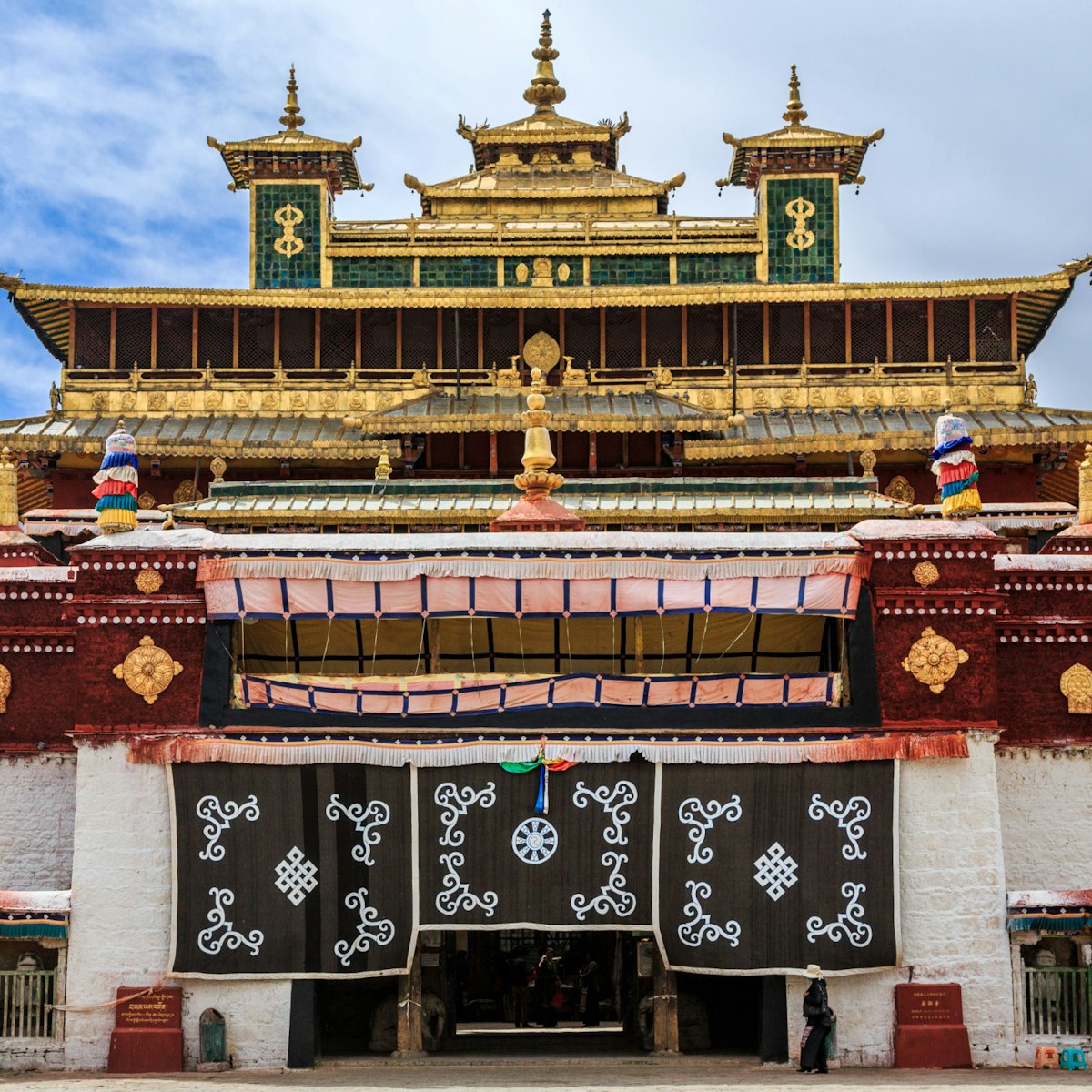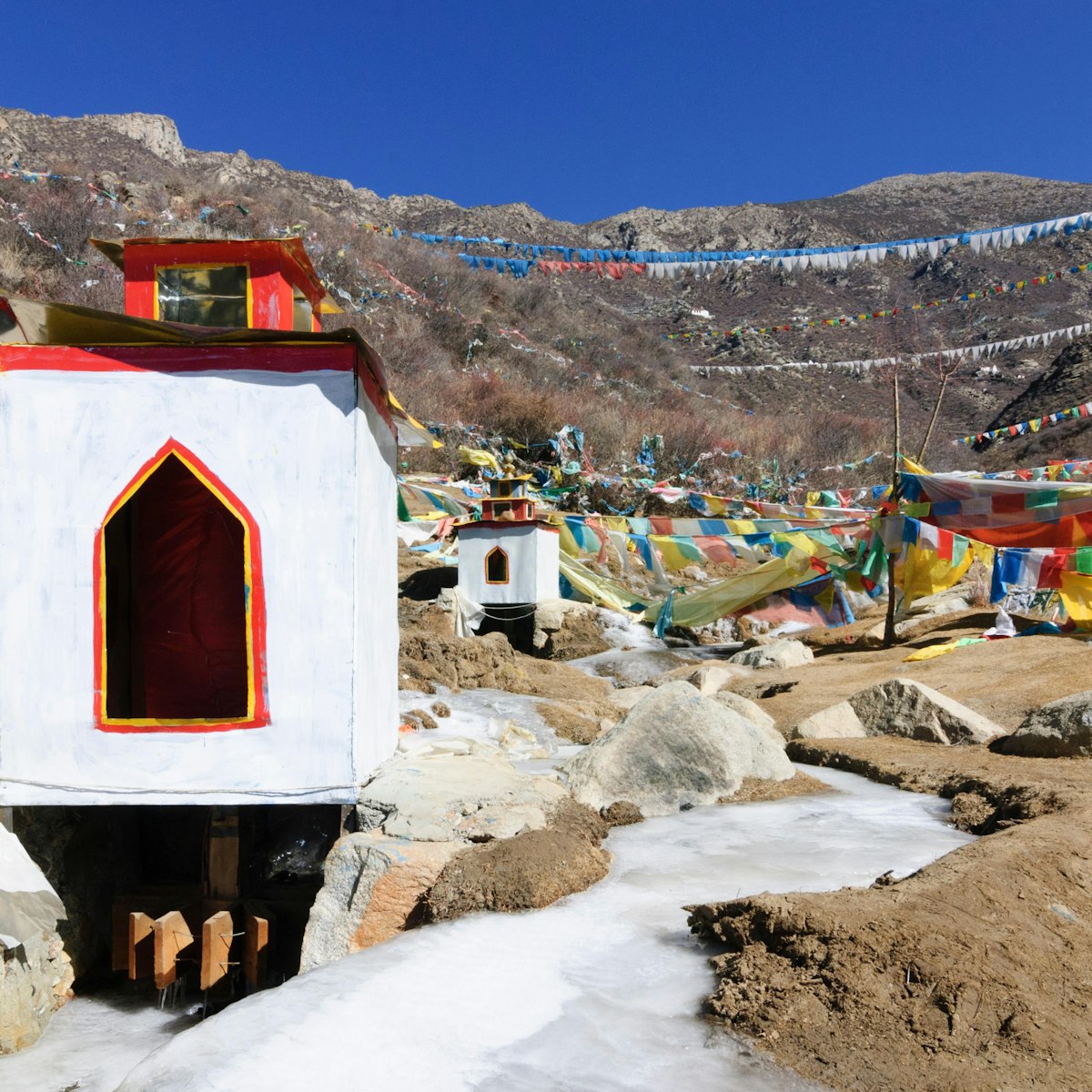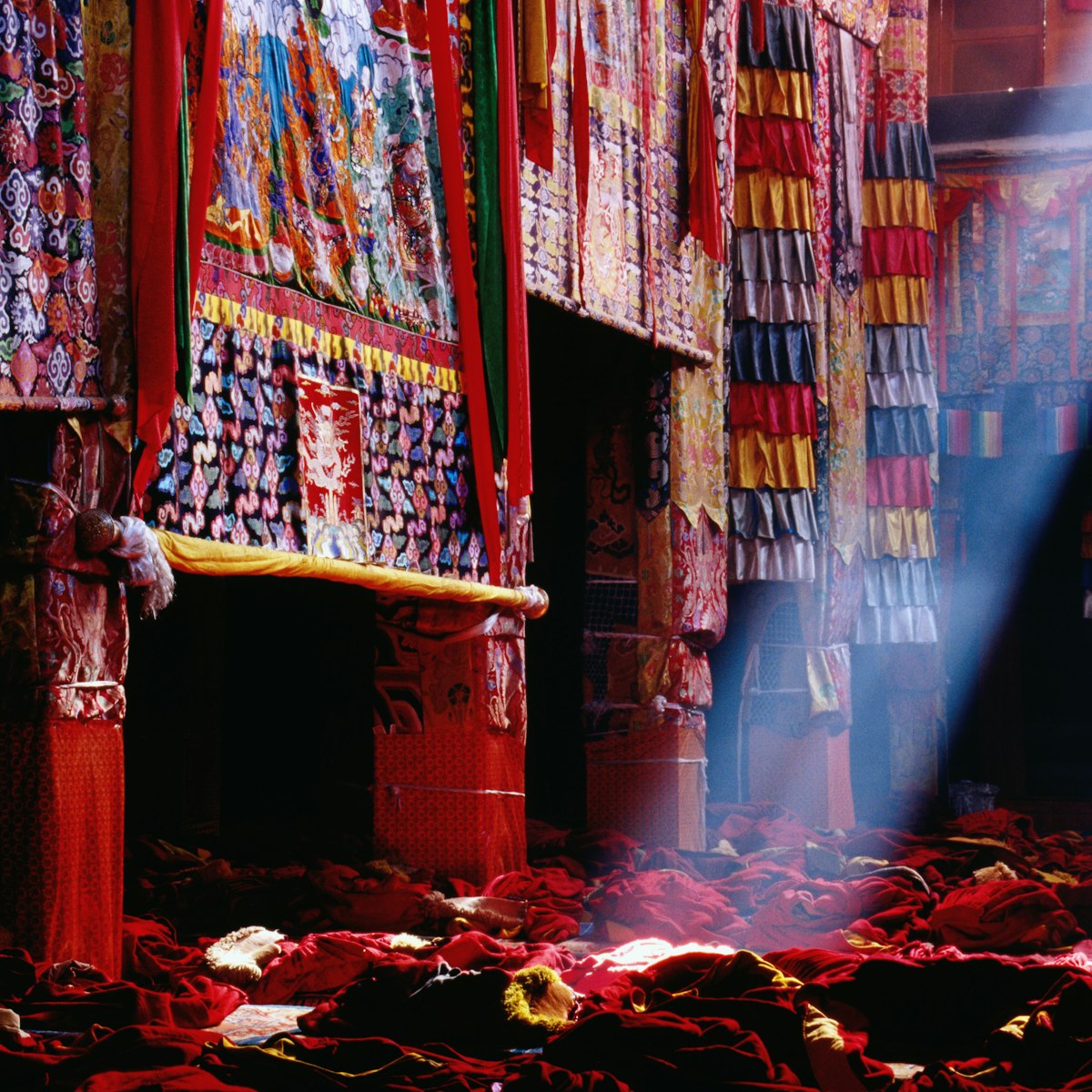The central building of Samye, the Ütse comprises a unique synthesis of architectural styles. The ground and 1st floors were originally Tibetan in style, the 2nd floor was Chinese and the 3rd floor Khotanese. The corner parapets with green and gold dorje (thunderbolt) designs are also unique. There's a lot to see here, so budget a couple of hours and carry a torch (flashlight) for the darker spaces.
Just to the left of the East Gate is a stele dating from 779. The elegant Tibetan script carved on its surface proclaims Buddhism as the state religion of Tibet by order of King Trisong Detsen. The entryways are flanked by two snow lions and two ancient stone elephants. Upon entering the building itself, look for photos showing the Ütse before and after the Cultural Revolution.
From here the entrance leads into the first of the ground-floor chambers: the assembly hall. As you enter the hall, look for the statue of a white chicken that is said to have once saved the monastery by waking up its monks during a fire. You pass statues of Thangtong Gyalpo and the writers Buton Rinchen Drup and Longchen Rabjampa to the left, before a row of figures greets you straight ahead: the translator Vairocana, Shantarakshita, Guru Rinpoche, Trisong Detsen and Songtsen Gampo (with an extra head in his turban). The photo below the Guru Rinpoche statue is of the famous original statue (now destroyed), which was a likeness of the guru and allegedly had the power of speech. Come here between 7am and 9am to hear the monks chanting.
To the rear of the assembly hall are steps leading into Samye’s most revered chapel, the Jowo Khang. You enter the inner chapel via three painted doors – an unusual feature. They symbolise the Three Doors of Liberation: those of emptiness, signlessness and wishlessness. A circumambulation of the inner chapel follows at this point (take a torch).
The centrepiece of the inner chapel is a 4m statue of Sakyamuni said to have appeared miraculously in the stone. Ten bodhisattvas and two protective deities line the heavy side walls of the chapel, which are decorated with ancient murals. Look also for the blackened Tantric mandalas on the ceiling.
Back in the main assembly hall, on the right are two groups of three statues: the first group is associated with the Kadampa order (Dromtompa and Atisha); the second group is multi-denominational and includes lamas from the Nyingmapa, Sakyapa and Gelugpa orders.
To the right of the hall is a gönkhang (protector chapel), with statues of deities so terrible they must be masked. A stuffed snake lurks over the blocked exit, while a stag's head adorns the inside entrance.
Before ascending to the 1st floor, take a look at the Chenresig Chapel, outside and to the left of the main assembly hall, which features a dramatic 1000-armed statue of Chenresig known as Chaktong Chentong.
As you head up to the 2nd floor, look for the giant troughs used to store the monks' tsampa (roasted-barley flour) and a series of wall paintings depicting the life of Guru Rinpoche. The structure here echoes the inner chapel and features an image of Guru Rinpoche in a semi-wrathful aspect, flanked by Tsepame and Sakyamuni, with Shantarakshita and Trisong Detsen flanking them. Look up to see the Chinese-influenced bracketing on the beams. There is an inner kora (pilgrim circuit) around the hall.
As you leave the inner chapel, look for a hole in the wooden panelling; steps lead up from inside the false wall to a secret room with statues of Vairocana and Trisong Detsen, which was used by King Trisong Detsen to listen to the lamas' teaching without being observed.
Some of the murals outside this hall are very impressive; those on the southern wall depict Guru Rinpoche, while those to the left of the main door show the fifth Dalai Lama with the Mongol Gushri Khan and various ambassadors offering their respects. The Dalai Lama’s quarters are just behind you at the southeastern corner of this floor, featuring a fine mural depicting Samye.
The 3rd floor is a modern renovation to the Ütse, the original having been entirely destroyed during the Cultural Revolution. It holds statues of four of the five Dhyani Buddhas, with a mandala of the fifth (Namse) on the ceiling, and along the outside of the hall's walls are paintings of Tibetan, Indian and Nepalese masters.
Walk around the back to a ladder leading up to the 4th floor. This chapel holds the sacred core of the temple, as well as an image of Dukhor (Kalachakra), a Tantric deity, but it is generally locked. As you descend from the 3rd floor there is a rare mural of the 14th (current) Dalai Lama at the top of the stairwell to the left. It was left on view for decades, but at the time of research the authorities had blocked the mural with a wooden board.
As you head back downstairs, stop at the 1st-floor relic chamber. Among the sacred objects on display are the staff of Vairocana, the stone skull of Shantarakshita, a dorje made from meteorite and a turquoise amulet containing a lock of Guru Rinpoche's hair. A shop in the corner of the hallway sells protective amulets, though it is often unmanned.
Back on the ground floor, you can follow the prayer-wheel circuit of the Ütse, and look at the interesting murals showing the founding of the monastery. You can also ascend to the outer roof for views over the complex. The roof was restored in 2016 using the traditional materials of twigs and packed earth.




